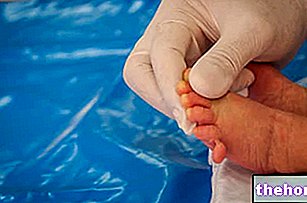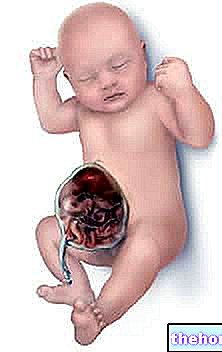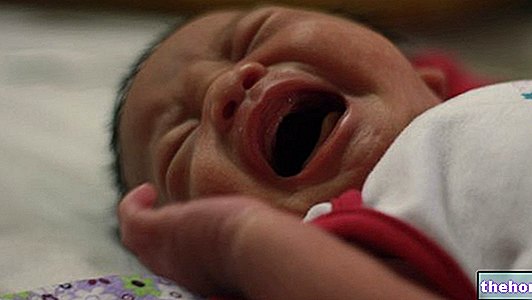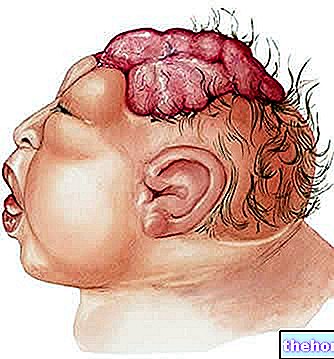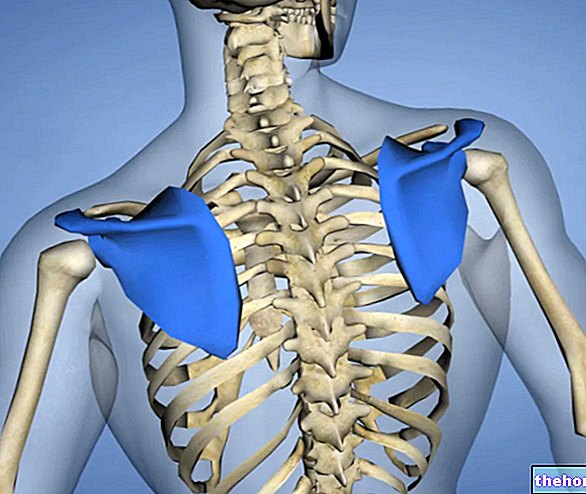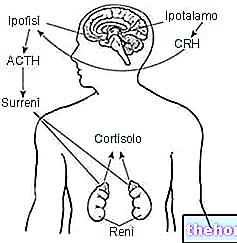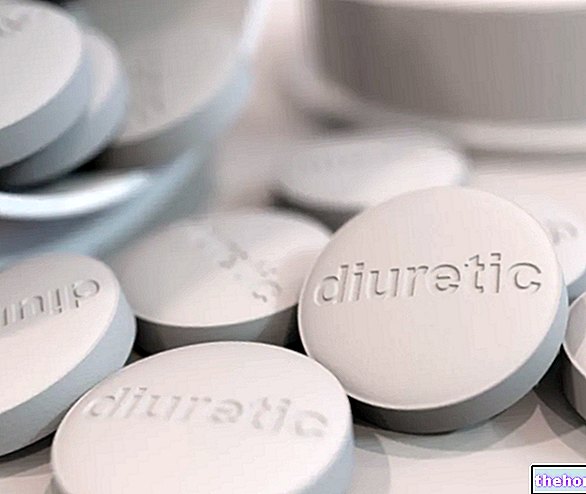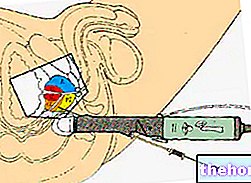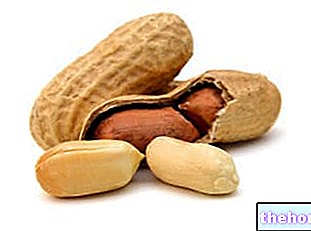Key points
Spina bifida is an incurable genetic malformation of the spinal column: it is a disease of the central nervous system in which some vertebrae, not completing their development, favor the exit of the meninges and / or spinal cord from a crack in the spine.
Spina bifida: causes
The cause of spina bifida lies in a defect in the closure of the neural tube, the structure from which the CNS originates. Spina bifida is a "genetic abnormality, probably influenced by: folic acid deficiency during pregnancy, folate metabolic abnormalities, alcoholism, obesity, pre-gestational diabetes.
Spina bifida: classification and symptoms
- SPINA BIFIDA OCCULTA: mild form of spina bifida, often asymptomatic. Some patients have mild leg asymmetry.
- MENINGOCELE: the meninges are embedded in the intravertebral space. This spina bifida causes: hernia of the dural sac, flaccid paralysis, deformity of the spine, hydrocephalus, convulsions.
- MYELOMENINGOCELE: more severe form of spina bifida, also involving the spinal cord. The most recurrent symptoms are: bladder / intestinal changes, convulsions, muscle weakness, paralysis, deformity of the limbs, walking deficits, scoliosis.
Spina bifida: diagnosis
Early diagnosis is essential for immediate intervention. The most used diagnostic tests are: amniocentesis, ultrasound ultrasound, blood test and alpha-fetoprotein test.
Spina bifida: cures and treatments
There is no complete cure for spina bifida. Various surgical treatments can alleviate the problem. The best therapy is prevention: before and during pregnancy, the future mother must supplement the diet with folic acid supplementation.
Spina bifida: definition
Spina bifida is a severe congenital malformation of the spine and spinal cord, unfortunately incurable. Typical of the early stages of embryonic development, spina bifida is the expression of a closure defect of the neural tube, the structure from which the Central Nervous System originates.

Spina bifida can appear anywhere on the spine, from the base of the skull to the sacrum; despite what has been said, in most cases diagnosed it affects the lumbar segment.
In this article we will try to shed light on the general characteristics of this complex and multifactorial pathology, answering frequently asked questions that worry many pregnant women: "Is spina bifida a" frequent anomaly? What causes arise at its origins? What signs and symptoms does an affected person exhibit? Can spina bifida be cured? "
Incidence
From what is reported in the scientific journal The Lancet, it seems that spina bifida prevails among women. In a 2008 study conducted in Great Britain, 32 cases of spina bifida were diagnosed. It should be emphasized that the incidence of the disease is extremely variable, especially according to the country and ethnicity. Magazine JAMA, pFor example, it reports some very interesting data:
- France: 0.7 children per 10,000 healthy births are affected by spina bifida
- Canada: 0.9 children per 10,000 healthy individuals are affected by spina bifida
- Norway, Hungary, Czechoslovakia, Japan: 1-6 cases of children with spina bifida per 10,000 live births
- United Arab Emirates: 7.7 children per 10,000 births are affected by spina bifida
- South America: 11.7 children per 10,000 born are affected by spina bifida
- Ireland and Wales: the incidence rate of spina bifida is extremely high. It is estimated that 3-4 children per 1,000 healthy births develop the most severe variant of spina bifida, with protrusion of the meninges and spinal cord (myelomeningocele).
Generally speaking, the disease occurs in 1.3 children per 10,000 births.
In recent years, the incidence rate of spina bifida has decreased considerably, thanks to the awareness campaign on the disease, aimed at promoting folic acid supplementation during pregnancy as the most effective treatment able to prevent spina bifida excellently.
Causes and risk factors
Since this is a genetic defect, it is not possible to trace with absolute certainty the cause involved in the origin of spina bifida. It is assumed that an intertwining of environmental and genetic elements can predispose the fetus to spina bifida:
- First of all, the LACK OF FOLIC ACID in the pregnant woman (also and above all during the pre-conceptional period close to fertilization) seems to be decisive in the triggering of complications relating to the development of the fetal spine.
- The presence of FOLATE METABOLIC ANOMALIES in the fetus can heavily affect the formation of spina bifida.
- Probably, even some CHROMOSOMIC ANOMALIES can predispose the fetus to spina bifida. The ideally attributed diseases are: Patau syndrome (or trisomy 13, a rare genetic disease in which the affected subject has three copies of chromosome 13 instead of 2), Edwards syndrome (the affected patient has 3 chromosomes 18 instead of 2) and Down syndrome .
- Another possible predisposing element for spina bifida is the mother's DIABETES. The risk of giving birth to a baby with spina bifida is estimated to be 2-10 times higher in women with pre-gestational diabetes than in healthy women.
- ALCOHOLISM and the administration of DRUGS such as sodium valproate (drug used for the treatment of convulsions) and carbamazepines (used in particular for the treatment of epilepsy) seem to increase the risk of spina bifida in the unborn child.
- If the fruit of the first pregnancy is a child with spina bifida, probably the brother will also be affected by the same disorder.
- Maternal "OBESITY" and diseases characterized by high and long-term FEVER can predispose the fetus to spina bifida. It seems that the mother's frequent use of saunas, Turkish baths, whirlpools with hot water and tanning beds may, in some way, predispose the fetus to spina bifida. However, it is not possible to give a certain and indisputable explanation for this correlation. : UVA, which have a high penetration power, and heat destroy the folates present in the blood, compromising the reproduction of the species (reduction of male fertility, greater risk of spina bifida) → dark skin prevents the destruction of folates caused by UV and is therefore an advantageous feature for equatorial populations.
Spina bifida is therefore attributed a multifactorial genesis, not yet fully demonstrated. What is established is that, although the vast majority of children with spina bifida are born from healthy parents, the hereditary component plays a leading role.
Other articles on "Spina Bifida"
- Spina Bifida: Signs or Symptoms
- Spina Bifida: Diagnosis, Prevention, Treatment


